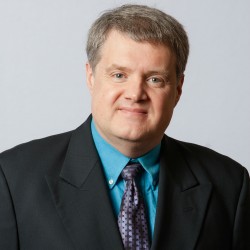by Charles Lane
America’s public-sector unions are on the defensive. Wisconsin has stripped them of most collective-bargaining rights and ended mandatory dues payments. Union-negotiated pension benefits are linked to the fiscal plight of cities from San Jose to bankrupt Detroit.
Last week, the Supreme Court heard a constitutional challenge to a long-standing element of public-employee-union power: the “agency fees” they charge to prevent “free-riding” by workers who are covered by contracts but don’t want to pay dues.
It may be only a matter of time before these disparate debates converge and squarely pose the question that lies at the root of them all: Is public-sector collective bargaining in the public interest?
The answer is no. All members of the public use schools, roads, parks and other government services — and pay taxes to support them. Their interest lies in receiving the highest-quality services at the lowest feasible cost. Period.
Public-sector unions interfere. They demand more pay and benefits, and more control over the workplace, than the people’s elected representatives might choose if they were answerable only to voters.
Indeed, political war chests accumulated through dues checkoffs and agency fees give public-sector unions more influence than ordinary voters in many states and counties. At contract time, they face their political allies across a bargaining table. That table, by the way, is behind closed doors; collective bargaining is often exempt from “sunshine laws” that cover other public business.
Defenders of public-sector unionism argue that it reduces costs and improves quality by ensuring “labor peace” — or, avoiding strikes and creating a happier, better-trained workforce.
A group of state governments led by New York made both arguments in a friend-of-the-court brief to the Supreme Court, citing the need to prevent any repeat of the “devastating” 1,400 work stoppages that plagued the country between 1965 and 1970. Why unions should have been rewarded for these actions, many of which were illegal, is not immediately clear. In any case, even well-paid unionized public workers still strike, as Chicago’s teachers proved in 2012 and the San Francisco Bay Area’s transit workers did in 2013.
Conversely, there is no public-sector collective bargaining in Virginia, but it’s not some hotbed of labor unrest. Can anyone who looks at this country’s urban school systems seriously maintain that unionization makes for an efficient workforce?
The labor peace justification tries to make a virtue out of something Americans normally, and properly, despise: government by interest group. A variant of that argument, advanced by my colleague Harold Meyerson, is that public-employee unions, with their large campaign donations and political staffs, have become “the all-around linchpin of the modern Democratic Party” and the progressive causes for which it stands.
Some of us, though, don’t think dependence on unions has been healthy for the Democratic Party or for the robust public sector it espouses. Again, the case in point is the public schools, which employ almost half of all local government employees but which Democrats dare reform only at the risk of war with teachers unions.
Also, California’s powerful prison guard union has provided key support for that state’s “three strikes and you’re out” mandatory life sentence law. Not progressive.
What about decent pay and benefits for low-wage workers, such as the home health-care providers in Illinois whose organization by the Service Employees International Union (SEIU) is at issue in the Supreme Court case? Actually, 40 percent of those workers opted to deduct the cost of the SEIU’s political activity from their dues, according to a review of Labor Department records by the conservative Illinois Policy Institute. That unusually high figure suggests the workers don’t think unionization is such a good deal. Obamacare has made health insurance much more widely available to low-wage workers, public and private, union or nonunion.
No one is saying public workers have no right to organize. They are free to associate and lobby government, openly, for better wages and working conditions — or anything else. In fact, public workers should have the right to form multiple groups and not be forced to accept “exclusive representation” by one union. The New York brief argues that this would produce a chaotic cacophony of employee voices. Yes, freedom and democracy can be inconvenient.
The fundamental problem is collective bargaining. It is appropriate in the private sector, where workers bargain with private, profit-making corporations, not the taxpaying citizenry — and where market forces provide an independent check on both sides’ demands. In the public sector, however, it means higher costs, lower efficiency and, worst of all, less democracy.
Read more at washingtonpost.com
